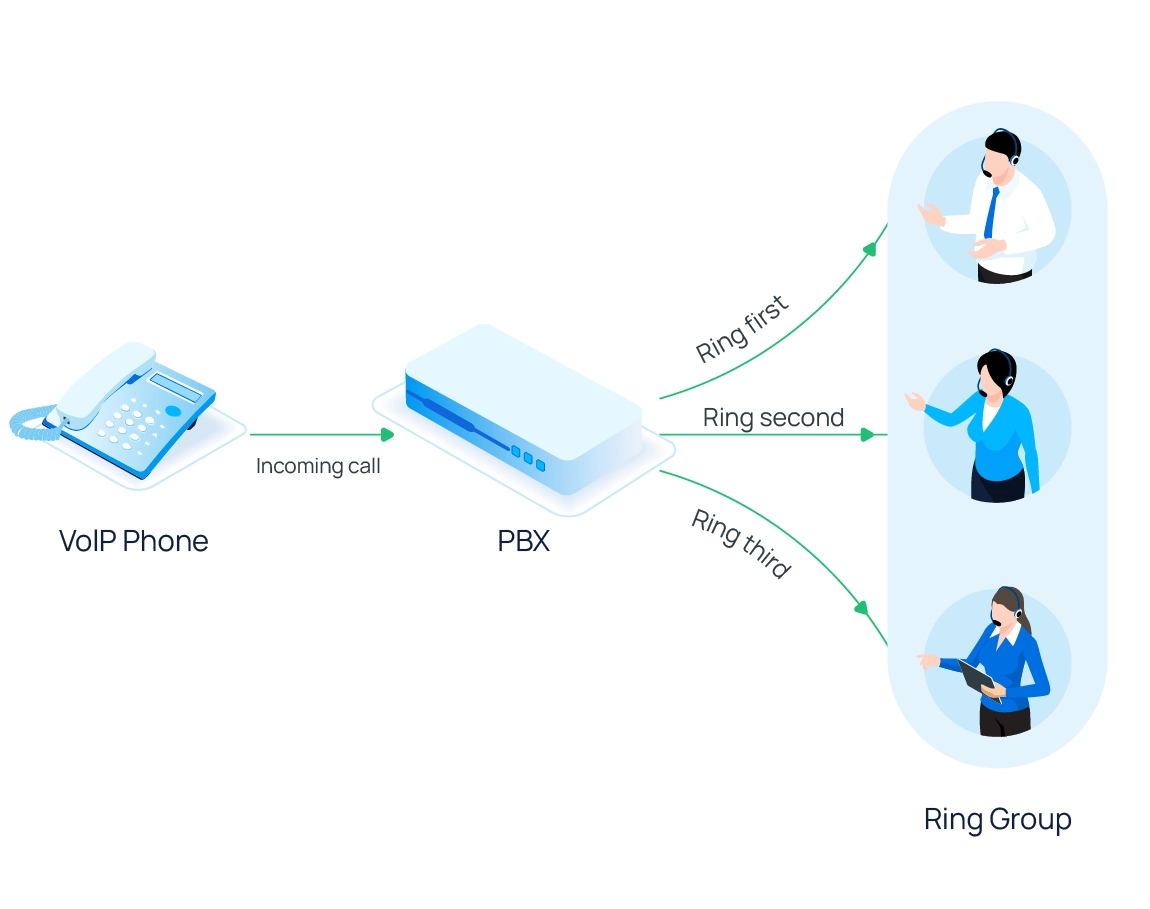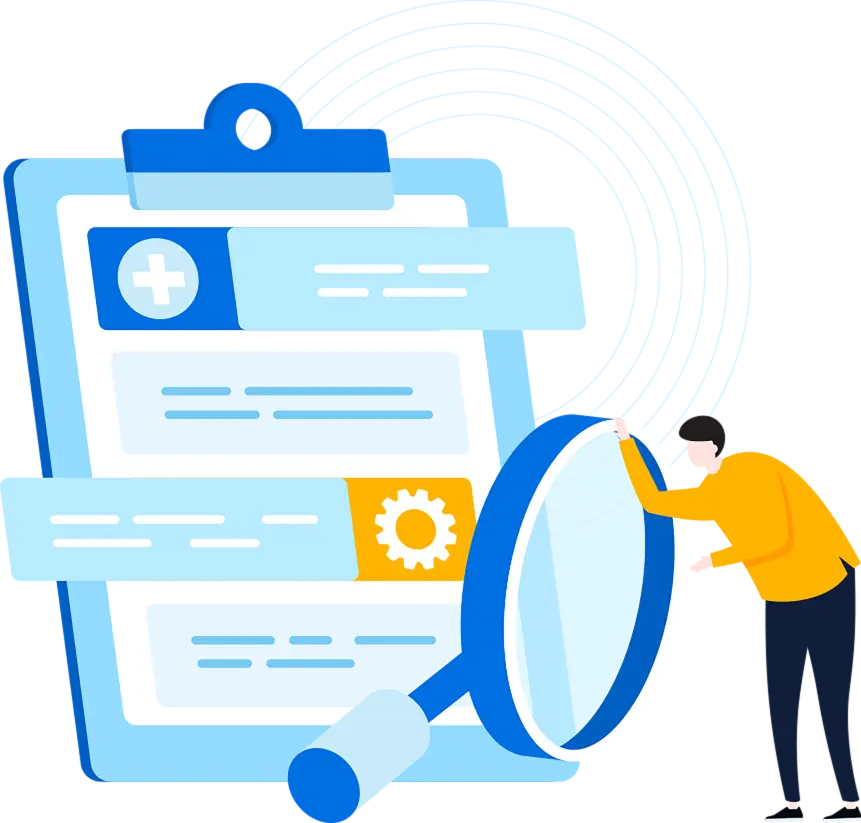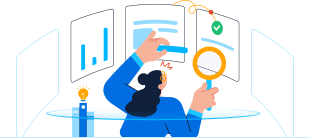Ring groups are the groups of extensions that ring at the same when there is an incoming call. It is often used to efficiently distribute calls to specific departments such as Sales, Support, and Accounting. It is a simple yet very nice feature that can help with the company’s organization and improve customer service.
What Are Ring Groups?
Essentially, a ring group has a set of phone numbers or extensions that are bound together. Whenever a caller dials in, the auto-attendant transfers the call to that group, and all the phones ring simultaneously or sequentially (up to different ringing strategies).
That is why it is advantageous to create specific ring groups that belong to different departments, such as sales, marketing, technical support, and HR team.
It will create an organized structure and dial the phone number of every agent available in the group.
How Does a Ring Group Work?

Ring groups are easy to create; however, you should approach them strategically. The basis of a ring group is that a caller can reach an agent faster, but there is also a bit more to it.
By configuring your ring groups efficiently, you can aid your business in scaling faster. Since your departments work on separate issues, any caller directed to their ring group will be immediately assisted. Therefore, define what ring groups deal with and set the ring strategy for each of them.
Types of Ring Group Patterns
When a call rings the members, you can select how it can be distributed. There are a few options to choose from:

Benefits of Ring Group

Frequently Asked Questions
How can the incoming calls be distributed?
The way calls are distributed depends on the ring strategy that can be either ring all simultaneously (rings all members at the same time) or ring sequentially (ring members one by one).
What happens if the incoming call isn't answered?
Depending on the options you have chosen in the settings, one of the following will happen:
-
The call will be ended
-
It will be routed to IVR
-
It will be transferred to another group
-
It will be transferred to an extension or group voicemail box
-
It will be routed to a specific queue
-
It will be routed to an external number assigned in the settings
Can somebody in an office pick up the call?
An employee that doesn't belong to a ring group cannot pick up the call. In case nobody in the group is available, the call will follow a path you have set in the configurations.
Flexible Deployment Options: Cloud-based or On-premises
Available in the Appliance, Software, and Cloud Edition, Yeastar provides
flexible deployment options,
allowing you to have your PBX system sited on-premises or in the
cloud.
Appliance Edition
If you prefer a plug-and-play system deployed within your company to ensure complete control, the Appliance Edition is the perfect fit.
See SpecificationsCloud Edition
Want to eliminate the workload of hardware installation while having your phone system up & running immediately? This is the option for you.
Learn MoreSoftware Edition
You make the call whether to install the PBX system on a hardware server, a virtual machine, or even in the cloud.
Learn More


